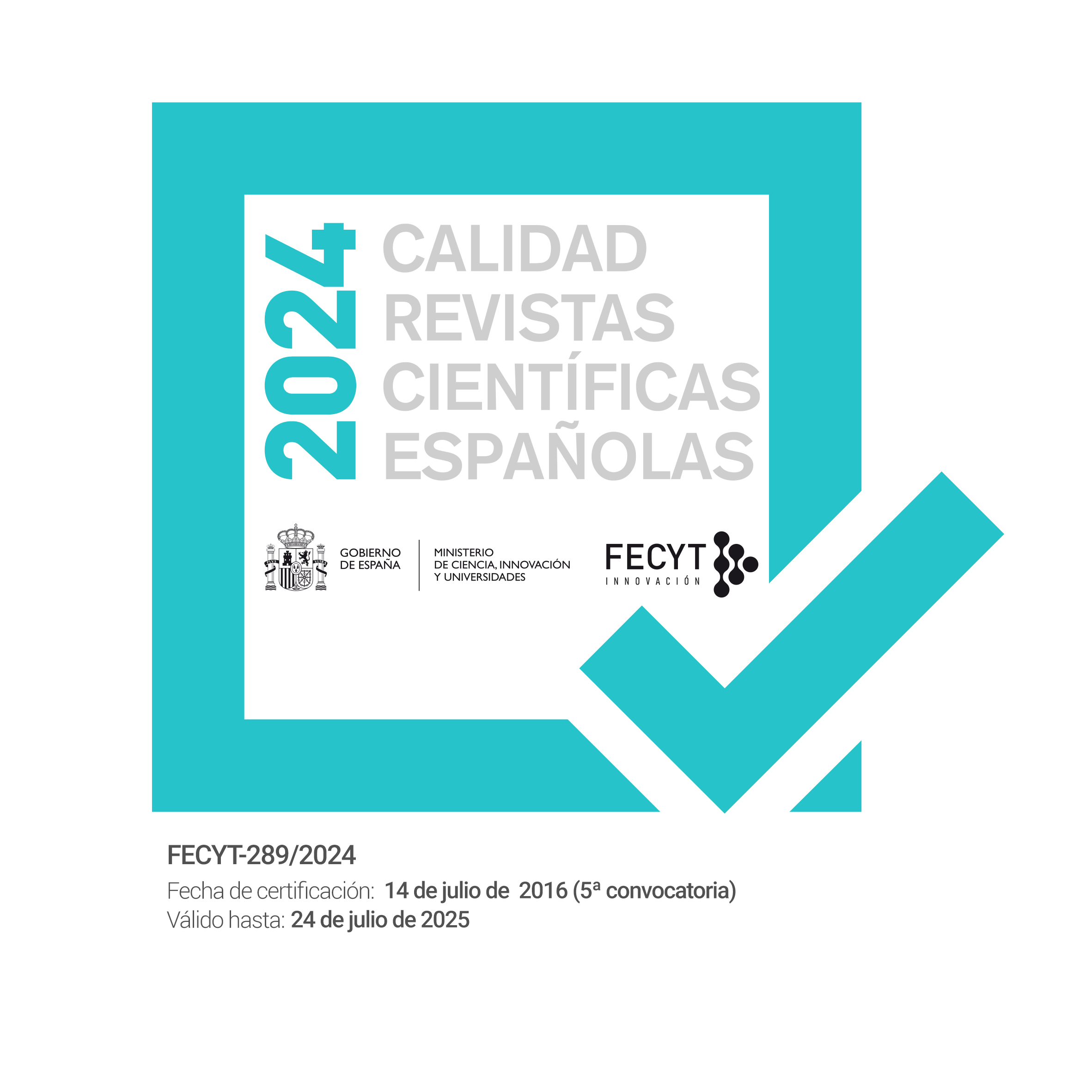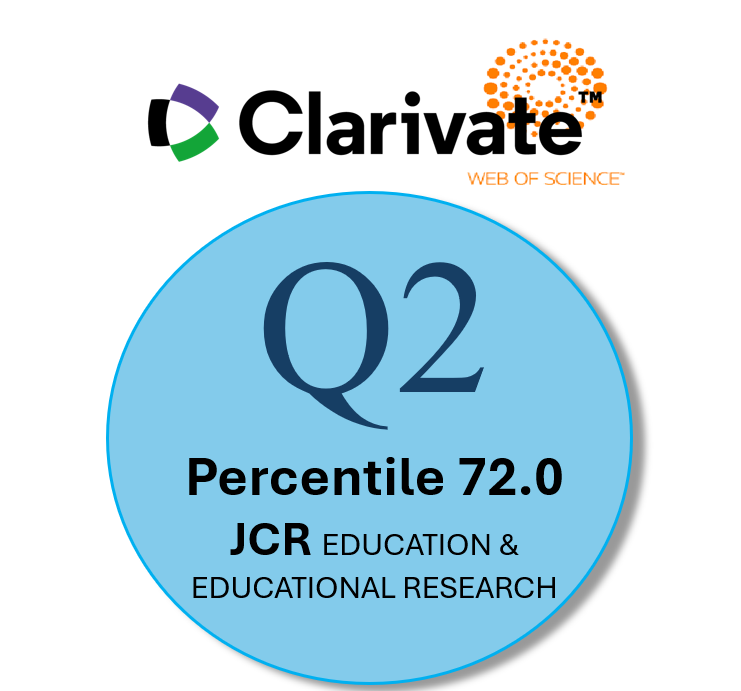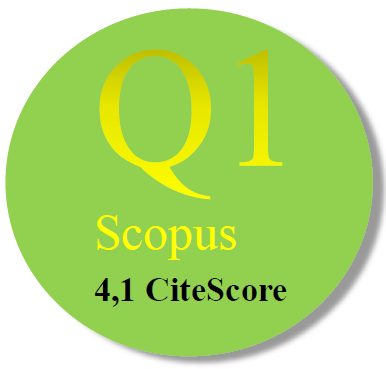Applications of Heutagogy in the Educational Use of E-Portfolios
Abstract
Preparing students for the complex and changing nature of the workforce has become an overriding objective within higher education. New pedagogies, which incorporate both informal and formal learning and support personalization of learning, are central to this objective. Educators are required to reassess the use of traditional pedagogies, as they attempt to foster development of skills and competencies for lifelong learning. Heutagogy, or self-determined learning, is a learning theory that addresses this need, giving students agency in determining what and how they learn. The theory is based in the principles of learner agency, capability and self-efficacy, reflection and metacognition, and non-linear learning, and when used with technology can be a powerful instructional approach for building students’ self-directed and lifelong learning skills. A compelling example of this is the e-portfolio. As a platform and assessment tool, the e-portfolio spans the spectrum of lifelong learning, as well as encompasses both formal and informal learning of the individual learner and addresses critical aspects of learning and reflection, showcasing the learner’s acquired skills and competencies. Based on successful cases in the literature, this article discusses the principles of heutagogy, the pedagogy-andragogy-heutagogy (PAH continuum) and its application in online learning environments, and the use of the e-portfolio in further cultivating and advancing self-determined learning. The article also offers recommendations for future practice and theory.
Downloads
-
Abstract9103
-
PDF3317
References
Agonács, N., & Matos, J.F. (2017). Towards a heutagogy-based MOOC design framework. Proceedings of EMOOCs 2017, May 22-26, 2017, Madrid, Spain. Retrieved from http://ceur-ws.org/Vol-1841/R01_127.pdf
Alexander, B., Ashford-Rowe, K., Barajas-Murphy, N., Dobbin, G., Knott, J., McCormack M., Pomerantz, J., Seilhamer, R., & Weber, N. (2019). EDUCAUSE Horizon Report: 2019 Higher Education Edition. Louisville, CO: EDUCAUSE. Retrieved from https://bit.ly/2Lc7lx8
Anders, A. (2015). Theories and applications of massive online open courses (MOOCs): The case for hybrid design. International Review of Research in Open and Distributed Learning, 16(6), 39-61.
Anderson, T. (2010). Theories for learning with emerging technologies. In G. Veletsianos (Ed.), Emerging technologies in distance education. Canada: Athabasca University Press. Retrieved from: https://bit.ly/2JBwH69
Anderson, T. (2019). Challenges and opportunities for use of social media in higher education. Journal of Learning for Development, 6(1), 6-19. Retrieved from https://bit.ly/30AZ9KB
Barrett, H. (2010). Balancing the Two Faces of ePortfolios. Educação, Formação & Tecnologias, 3(1), 6-14. Retrieved from https://bit.ly/30oQ8H2
Barrett, H. (2006). Using electronic portfolios for formative/classroom-based assessment. Connected Newsletter. Retrieved from https://bit.ly/2YNnkDR
Bernath, U., & Rubin, E. (2003). Reflections on teaching and learning in an online masers program: A case study. Oldenburg, Germany: BIS. Retrieved from https://bit.ly/30NJwzR
Blaschke, L. M. (2019). The pedagogy-andragogy-heutagogy continuum and technology-supported personal learning environments. In I. Jung (Ed.), Open and distance education theory revisited: Implications for the online era. Heidelberg, Germany: Springer.
Blaschke, L.M. (2014a). Moving students forward in the PAH continuum. In L.M. Blaschke, C. Kenyon, & S. Hase (Eds.), Experiences in self-determined learning, (pp. 56-67). United States: CreateSpace Independent Publishing Platform. Retrieved from https://uol.de/coer/announcements/free-oer-now-available-experiences-in-self-determined-learning/
Blaschke, L. M. (2014b). Using social media to engage and develop online learners in self-determined learning. Research in Learning Technology, 22. https://doi.org/10.3402/rlt.v22.21635
Blaschke, L. M. (2012). Heutagogy and lifelong learning: A review of heutagogical practice and self-determined learning. The International Review Of Research In Open And Distance Learning, 13(1), 56-71. https://doi.org/10.19173/irrodl.v13i1.1076
Blaschke, L. M., & Brindley, J. (2011). Establishing a foundation for reflective practice: A case study of learning journal use. European Journal of Open, Distance, and E-Learning. Retrieved from https://bit.ly/2JY71Qt
Blaschke, L. M., & Hase, S. (2015). Heutagogy: A holistic framework for creating 21st century self-determined learners. In M.M. Kinshuk & B.Gros, The future of ubiquitous learning: Learning designs for emerging pedagogies. Heidelberg, Germany: Springer Verlag.
Brandt, B. (2013). The learner’s perspective. In Hase, S., & Kenyon, C.(Eds.), Self- determined learning: Heutagogy in action. London, United Kingdom: Bloomsbury Academic.
Canning, N. (2010). Playing with heutagogy: Exploring strategies to empower mature learners in higher education. Journal of Further and Higher Education, 34(1), 59-71. https://doi.org/10.1080/03098770903477102
Canning, N. & Callan, S. (2010). Heutagogy: Spirals of reflection to empower learners in higher education. Reflective Practice, 11(1), 71-82. https://doi.org/10.1080/14623940903500069
Churchill, D. (2009). Educational applications of Web 2.0: Using blogs to support teaching and learning. British Journal of Educational Technology, 40(1), 179–183. https://doi.org/10.1111/j.1467-8535.2008.00865.x
Cochrane, T., Antonczak, L., Gordon, A., Sissons, H., & Withell, A. (2012). Heutagogy and mobile social media: Post Web 2.0 pedagogy. In M. Brown, M. Hartnett, & T. Stewart (Eds.), Future challenges, sustainable futures. In Proceedings ascilite, Wellington 2012. (pp. 204-214).
Cochrane, T., & Rhodes, D. (2011). iArchi(tech)ture: Heutagogical approaches to education facilitated by mlearning integration. Education and Technology: Innovation and Research. Proceedings of ICICTE 2011, pp. 112-121. Available from https://www.researchgate.net/profile/Thomas_Cochrane/publication/235633454_iArchitechture_Heutagogical_Approaches_to_Education_Facilitated_by_Mlearning_Integration/links/57cf87ba08ae057987ac0f13/iArchitechture-Heutagogical-Approaches-to-Education-Facilitated-by-Mlearning-Integration.pdf
Conole, G. (2012). Designing for learning in an open world: Explorations in the learning sciences, instructional systems and performance technologies. New York/Heidelberg: Springer.
Davidson, E. J. (2005). Evaluation methodology basics: the nuts and bolts of sound evaluation. Thousand Oaks: Sage.
DeMers, M. (2019). Heutagogy, personal learning environments, and multi-path entry into GIS education. In H. Walkington, J. Hill, & Dyer S. (Eds.), Handbook for teaching and learning in geography. Elgaronline. https://doi.org/10.4337/9781788116497.00030
Dick, B. (2013). Crafting learner-centred processes using action research and action learning. In Hase, S., & Kenyon, C. (Eds.), Self-determined learning: Heutagogy in action. London, United Kingdom: Bloomsbury Academic.
Eberle, J., & Childress, M. (2009). Using heutagogy to address the needs of online learners. In P. Rogers, G.A. Berg, J.V. Boettecher, & L. Justice (Eds.), Encyclopedia of distance learning (2nd ed.), (pp. 2239-2245). New York, NY: Idea Group, Inc.
Ehlers, U-D., & Kellermann, S.A. (2019). Future skills: The future of learning and higher education. Results of the International Future Skills Delphi Survey. Karlsruhe, Germany: Baden-Wurttemberg Cooperative State University. Retrieved from https://bit.ly/2WogLKv
Ellucian.com (2019). Credential clout: How higher education can prepare for an evolving job market. Retrieved from https://bit.ly/2HxKyrU
Farrell, O., & Seery, A. (2019). “I am not simply learning and regurgitating information, I am also learning about myself”: Learning portfolio practice and online distance students. Distance Education, 40(1), 76-97. https://doi.org/10.1080/01587919.2018.1553565
Gardner, A., Hase, S., Gardner, G., Dunn, S.V., & Carryer, J. (2008). From competence to capability: A study of nurse practitioners in clinical practice. Journal of Clinical Nursing, 17(2), 250-258. https://doi.org/10.1111/j.1365-2702.206.0188.x
Garnett, F. (2013). The PAH continuum: Pedagogy, andragogy, and heutagogy (Web log message). Heutagogy Community of Practice. Retrieved from https://bit.ly/2YFrdKY
Gerstein, J. (2013). Education 3.0 and the pedagogy (andragogy, heutagogy) of mobile learning. (Web log message). User generated education. Retrieved from https://bit.ly/QkyU6A
Gibbons, A. S., & Rogers, P. C. (2009). Coming at design from a different angle: Functional design. In Learning and instructional technologies for the 21st century (pp. 1-11). Springer, Boston, MA.
Glassner, A., & Back, S. (in press, 2020). Exploring heutagogy in higher education: Academia meets the Zeitgeist. Singapore: Springer Nature.
Hase, S. (2009). Heutagogy and e-learning in the workplace: some challenges and opportunities. Impact: Journal of Applied Research in Workplace E-learning, 1(1), 43–52.
Hase, S. (2011). Learner defined curriculum: heutagogy and action learning in vocational training. Southern Institute of Technology Journal of Applied Research, Special Edition on Action Research. Retrieved from https://bit.ly/2wkbPrn
Hase, S. (2014). Skills for the learner and learning leader in the 21st century. In L.M. Blaschke, C. Kenyon, & S. Hase (Eds.), Experiences in self-determined learning, (pp. 98-107). United States: CreateSpace Independent Publishing Platform. Available from https://uol.de/coer/announcements/free-oer-now-available-experiences-in-self-determined-learning/
Hase, S., & Kenyon, C. (2000). From andragogy to heutagogy: Implications for VET. Southern Cross University, ePublications @SCU. Retrieved from https://bit.ly/2WpZZe6
Hase, S., & Kenyon, C. (2007). Heutagogy: A child of complexity theory. Complicity: An International Journal of Complexity and Education, 4(1), 111-119. Retrieved from https://bit.ly/2QjLoLR
Jackson, N.J. (2013). Lifewide learning, education and personal development (e-book). Retrieved from https://bit.ly/28Jc8As
Kanwar, A.S., Balasubramanian, K., & Umar, A. (2013). Lifelong learning in South Africa. International Journal of Continuing Education & Lifelong Learning, 5(2), 17-39. Retrieved from https://search.informit.com.au/documentSummary;dn=385667795117099;res=IELHSS
Jimoyiannis, A., Schiza, E. I., & Tsiotakis, P. (2018). Students’ Self-Regulated Learning Through Online Academic Writing in a Course Blog. In D. Sampson, D. Ifenthaler, J. M. Spector, & P. Isaías (Eds.), Digital Technologies: Sustainable Innovations for Improving Teaching and Learning (pp. 111–129). https://doi.org/10.1007/978-3-319-73417-0
Jimoyiannis, A., & Tsiotakis, P. (2016). Self-directed learning in e-portfolios : Analysing students ’ performance and learning presence. EAI EA Endorsed Transactions, 3(10), 1–9. https://doi.org/10.4108/eai.10-3-2016.151120
Knowles, M. (1975). Self-directed learning: A guide for learners and teachers. USA: Cambridge Adult Education.
Lederman, D. (2019, April 17). Harsh take on assessment…from assessment pros. Inside Higher Ed. Retrieved from https://bit.ly/2GjdbYc
Luckin, R., Clark, W., Garnett, F., Whitworth, A., Akass, J. & Cook, J. (2010). Learner-generated contexts: A framework to support the effective use of technology for learning. In M. Lee & C. McLoughlin (Eds.), Web 2.0-based e-learning: Applying social informatics for tertiary teaching (pp. 70-84). Hershey, PA: IGI Global.
Maina, M. & Garcia, I. (2016). Articulating personal pedagogies through learning ecologies. In B. Gros, Kinshuk, & M. Maina (Eds.), The future of ubiquitous learning: Learning designs for emerging pedagogies (pp. 73-94). Berlin Heidelberg: Springer. https://doi.org/10.1007/978-3-662- 47724-3
Marín, V. I. (2020). Research-based learning in education studies: Design inquiry using group e-Portfolios based on blogs. Australasian Journal of Educational Technology, 36(1), 1-20. https://doi.org/10.14742/ajet.4523
Maslow, A.H. (1943). A theory of human motivation. Psychological Review, 50, 370-396. https://doi.org/10.1037/h0054346
Maykut, C., Wilkd, C., & May, N. (2019). Heutagogy: Enacting caring science practices. International Journal of Caring Sciences, 12(11), 11-17. Retrieved from https://bit.ly/2VN7BTm
McAuliffe, M.B., Hargreaves, D.J., Winter, A.J., & Chadwick, G. (2009). Does pedagogy still rule? Australasian Journal of Engineering Education, 15(1), 13-18. https://doi.org/10.1080/22054952.2009.11464018
McLoughlin, C. & Lee, M. J. W. (2007). Social software and participatory learning: Pedagogical choices with technology affordances in the Web 2.0 era. In ICT: Providing choices for learners and learning. Proceedings ascilite Singapore 2007. Retrieved from https://bit.ly/2uIAAv0
Mezirow, J., & Associates. (1990). Fostering critical reflection in adulthood: A guide to transformative and emancipatory learning. San Francisco, CA: Jossey-Bass Publishers.
Narayan, V., Herrington, J., & Cochrane, C. (2019). Design principles for heutagogical learning: Implementing student-determined learning with mobile and social media tools. Australasian Journal of Educational Technology, 35(3), 86-101. https://doi.org/10.14742/ajet.3941
OECD. (2018). The future of higher education and skills: Education 2030. Retrieved from: https://bit.ly/2IhJXYs
Porto, S. (2008). E-portfolios from concept to implementation: In search of an enhanced MDE experience. Unpublished master’s thesis. Retrieved from https://bit.ly/2YLqdFp
Porto, S., Blaschke, L. M., & Kurtz, G. (2011). Creating an ecosystem for life-long learning through social media: A graduate experience. In C. Wankel (Ed.), Educating educators with social media: Cutting-edge technologies in higher education series. Bingley, United Kingdom: Emerald Group Publishing.
Prensky, M. (2010). Teaching digital natives: Partnering for real learning. Thousand Oaks, CA: Corwin Press. Retrieved from http://oetmanhattan.wikispaces.com/file/view/Prensky-- Teaching+Digital+Natives-in+press6.pdf
Redecker, C. & Punie, Y. (Ed.). (2017). European Framework for the Digital Competence of Educators: DigCompEdu. Luxembourg, EU: Publications Office of the European Union. DOI: 10.2760/159770. Retrieved from https://bit.ly/2APXFm8
Reigeluth, C. M., & Carr-Chellman, A. A. (Eds.). (2009). Instructional-design theories and models, volume III: Building a common knowledge base (Vol. 3). New York: Routledge.
Reigeluth, C.M., & Keller, J.B. (2009). Understanding instruction. In C.M. Reigeluth & Carr-Chellmann, A.A (Eds.), Instructional-design theories and models, volume III: Building a common knowledge base (Vol. 3). New York: Routledge.
Rogers, C.R. (1961). On becoming a person: A therapist’s view of psychotherapy. Boston, MA, & New York, NY: Houghton Mifflin Company.
Sangrá, A., Raffaghelli, J.E., & Guitert-Catasus, M. (2019). Learning ecologies through a lens: Ontological, methodological and applicative issues: A systematic review of the literature. British Journal of Educational Technology, 50(4), 1619-1638. https://doi.org/10.1111/bjet.12795
Schön, D.A. (1983). The reflective practitioner: How professionals think in action. United States: Basic Books, Inc.
Scully, D., O’Leary, M. & Brown, M. (2018). The learning portfolio in higher education: A game of snakes and ladders. Dublin: Dublin City University, Centre for Assessment Research, Policy & Practice in Education (CARPE) and National Institute for Digital Learning (NIDL). Retrieved from https://bit.ly/2EsMj7Q
Sharpe, R., Beetham, H., & de Freitas, S. (2010). Rethinking learning for a digital age: How learners are shaping their own experiences. New York and London: Routledge.
Siemens, G. (2007). Connectivism: Creating a learning ecology in distributed environments. In T. Hug (Ed) Didactics of microlearning: Concepts, discourses and examples. Munster, Germany: Waxman.
Walti, C. (2004). The web-based portfolio and learning journal in the MDE program – Support for a work in progress. In U. Bernath & A. Szücs (Eds.), Supporting the Learner in Distance Education and E-Learning, Proceedings of the Third EDEN Research Workshop (pp. 87 - 95). Carl von Ossietzky University of Oldenburg, Germany. Retrieved from https://bit.ly/2K55zfg
Stephenson, J. & Weil, S. (1992), Quality in learning: A capability approach in higher education. London, UK: Kogan Page.
Stoszkowski, J., & McCarthy, L. (2019). Students’ perceptions of the learner attributes required for (and resulting from) heutagogical learning. Journal of Learning Development in Higher Education, 14. Retrieved from https://journal.aldinhe.ac.uk/index.php/jldhe/article/view/458/pdf
Tur, G., Urbina, S., & Forteza, D. (2019). Rubric-based Formative Assessment in Process Eportfolio: Towards Self-regulated Learning. Digital Education Review, 35. https://doi.org/10.1344/der.2019.35.18-35
Zawacki-Richter, O., Baecker, E. M., & Hanft, A. (2011). Validation of competencies in e-portfolios: A qualitative analysis. The International Review of Research in Open and Distributed Learning, 12(1), 42-60. https://doi.org/10.19173/irrodl.v12i1.893
Las obras que se publican en esta revista están sujetas a los siguientes términos:
1. El Servicio de Publicaciones de la Universidad de Murcia (la editorial) conserva los derechos patrimoniales (copyright) de las obras publicadas, y favorece y permite la reutilización de las mismas bajo la licencia de uso indicada en el punto 2.
2. Las obras se publican en la edición electrónica de la revista bajo una licencia Creative Commons Reconocimiento-NoComercial-SinObraDerivada 3.0 España (texto legal). Se pueden copiar, usar, difundir, transmitir y exponer públicamente, siempre que: i) se cite la autoría y la fuente original de su publicación (revista, editorial y URL de la obra); ii) no se usen para fines comerciales; iii) se mencione la existencia y especificaciones de esta licencia de uso.
3. Condiciones de auto-archivo. Se permite y se anima a los autores a difundir electrónicamente las versiones pre-print (versión antes de ser evaluada) y/o post-print (versión evaluada y aceptada para su publicación) de sus obras antes de su publicación, ya que favorece su circulación y difusión más temprana y con ello un posible aumento en su citación y alcance entre la comunidad académica. Color RoMEO: verde.













